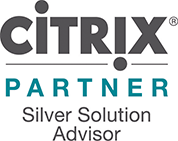It’s almost humbling to look back on the mid-2000s, where the smart phone kick-started a technical revolution and put web-connected, technically transformative hardware in our pockets. In kickstarting the Bring Your Own Device (BYOD) movement, our smart phones became a simple, more flexible way to connect to our workplaces.
Simpler times, not least compared to today: where Cloud services, remote working and rising cyber security threats have made BYOD far more pervasive, and much more complex to manage. Enter Mobile Device Management (MDM) and Mobile Application Management (MAM).
What are MDM and MAM?
As businesses began to implement BYOD policies, or to provide users with personal devices of their own, they entered a complex operational issue. How could they ensure employees abided by company policy, were secured from threats outside the company network, and connected only via devices that were certifiably secure?
This is where MDM and MAM come in.
What is Mobile Device Management?
MDM solutions allow admins to manage and monitor the mobile devices that connect to their business. This helps keep devices up-to-date with the latest security updates, allows for tighter device managing and ensures devices are end-to-end encrypted for secure data transit.
The rise of Cloud services, which allow us to access our work data from any compatible device, has made Mobile Device Management crucial to business security and success. Yet it has also made device management a lot simpler. MDM software is increasingly Cloud-dependant and more frequently adopting the Software-as-a-Service (SaaS) model, ensuring admins can control devices from anywhere at any time, and keeping their monthly mobile management costs predictable.
Solutions such as Microsoft Intune take these controls a step further, bringing devices and their associated Microsoft solutions into a single Cloud environment. Through this, administrators can keep track of associated software licenses, push security certificates to new devices and wipe sensitive data quickly from lost, stolen or inactive hardware.
Mobile Device Management…
- Saves time by auto-configuring settings, apps and security across devices
- Ensures devices are used only per company guidelines and compliances
- Allows for fast and simple management of all mobile devices on a company network
- Helps to improve efficiency and productivity
- Is more suited to company-owned devices than personal, owing to their more generalised approach to user control. However, it is still advisable to use MAM on company-owned devices for maximum efficiency.
What is Mobile Application Management?
MAM is a little more granular, allowing administrators to set controls and restrictions on an application level. This means that applications such as email, web browsers or Microsoft 365 can only be used to the extent allowed by the company – even when off-premises.
By restricting the use of email clients or web browsers, businesses can enact tighter security, minimising the likelihood of open suspect emails or visiting harmful websites. Many MAM solutions may also assist with the development of app catalogues, providing a list of approved applications that employees can install freely, and administrators manage accordingly.
MAM is a strong enabler of both security and flexibility, not only in tightly controlling data flows between applications, but helping users make educated choices in the solutions they install. In a recent global study by Jamf, 87% of respondents claimed that having their choice of working device was important to them; with MAM, you can encourage productivity by letting them do so in controlled circumstances.
Mobile Application Management:
- Enables user flexibility without sacrificing security
- Standardises company mobile devices by allowing only approved software and solutions
- Allows for more sweeping and customisable rollout of updates and configurations
- Is especially well suited for a BYOD policy, as it controls only your workplace apps, not a users’ personal device. However, it is advisable to use both MAM and MDM on company-owned devices for maximum efficiency.
However you manage your mobile workers, the rise of Cloud solutions and remote working make MDM and MAM nothing less than essential for the modern enterprise.
Want to know more about protecting your end user devices and security? Our free downloadable eBook, The Vitals of Mobile Device Management with Microsoft Intune, is the perfect deep dive.










